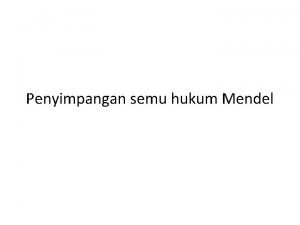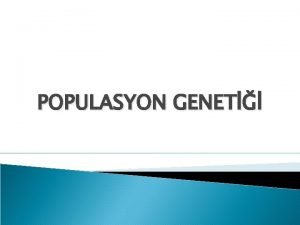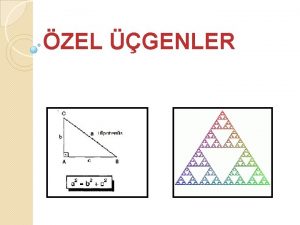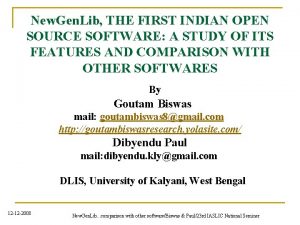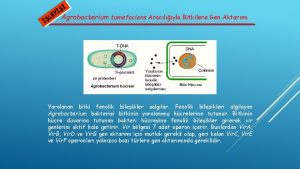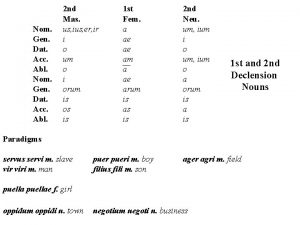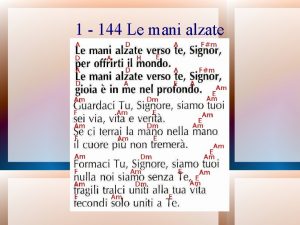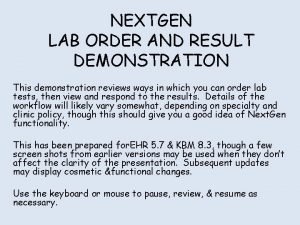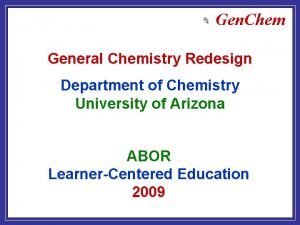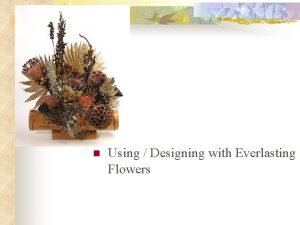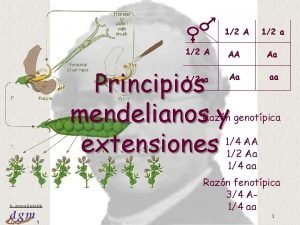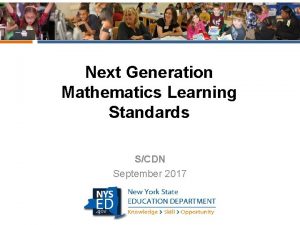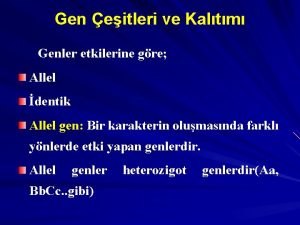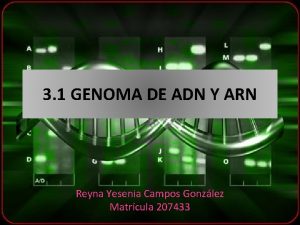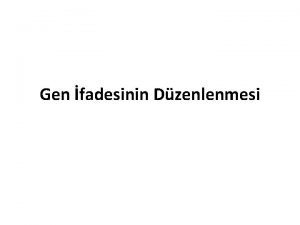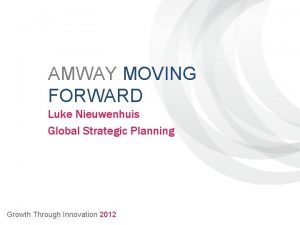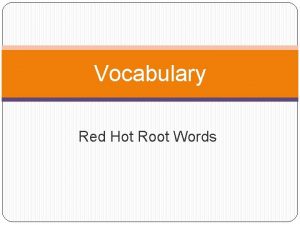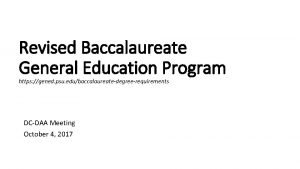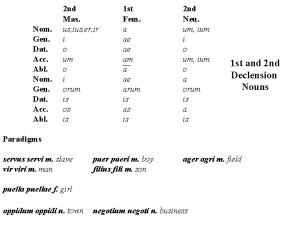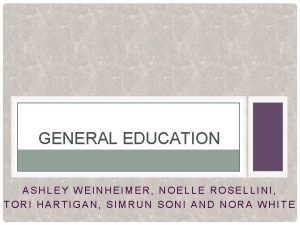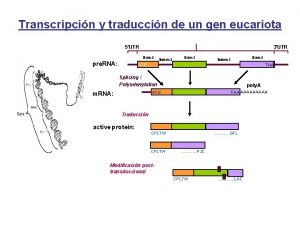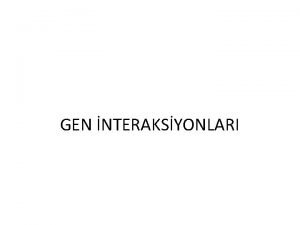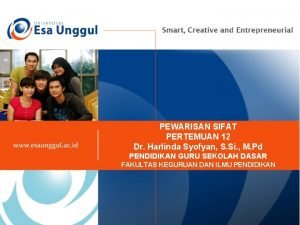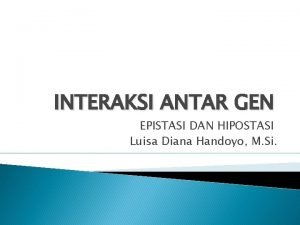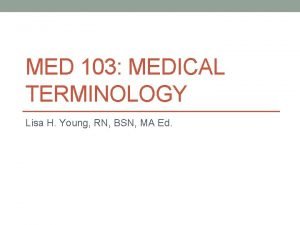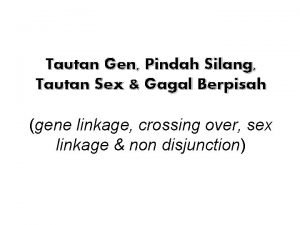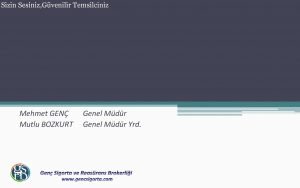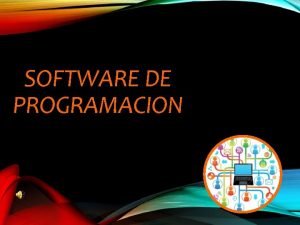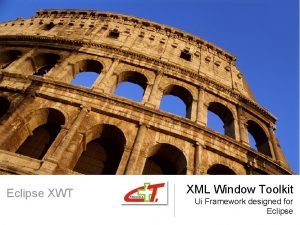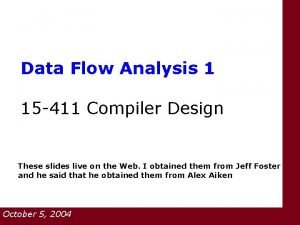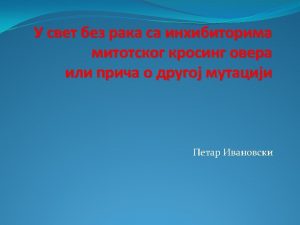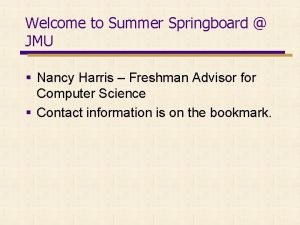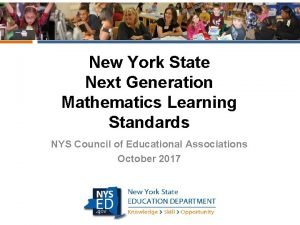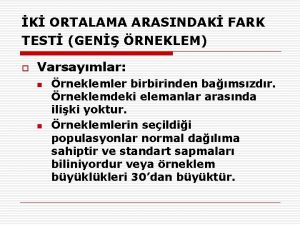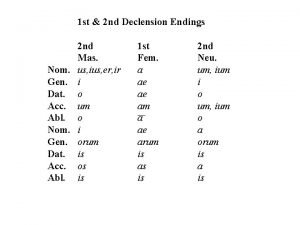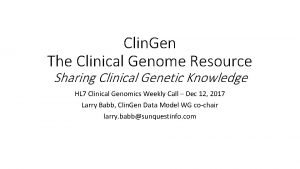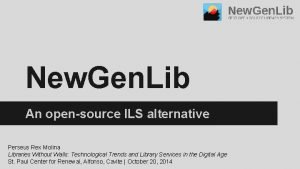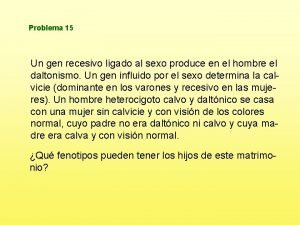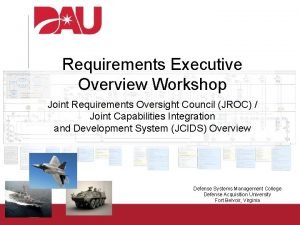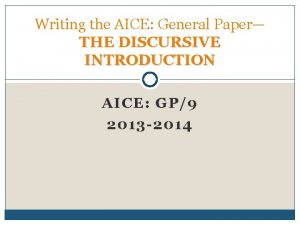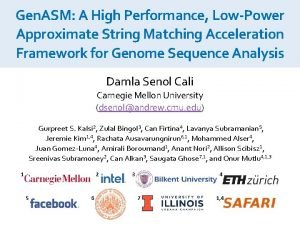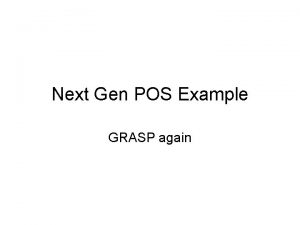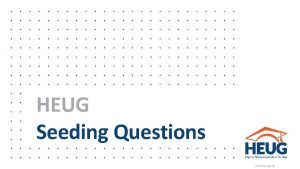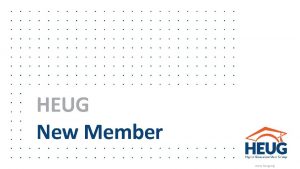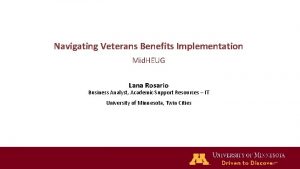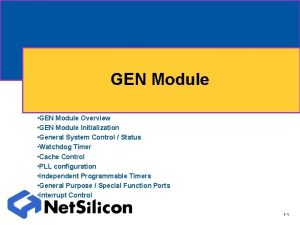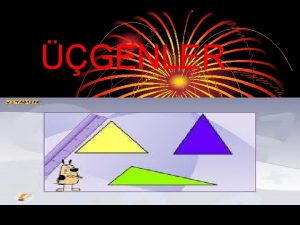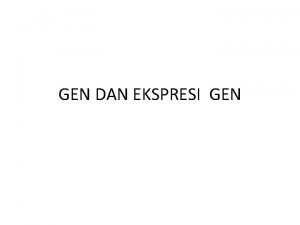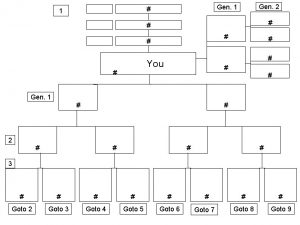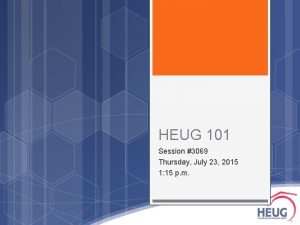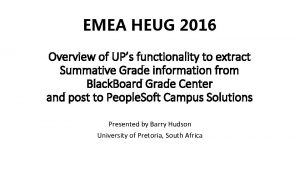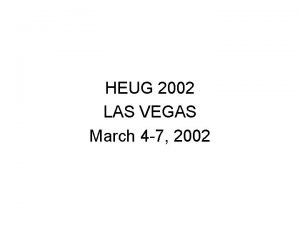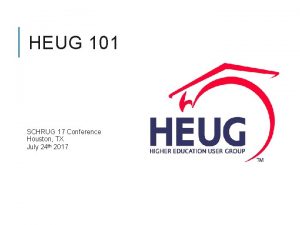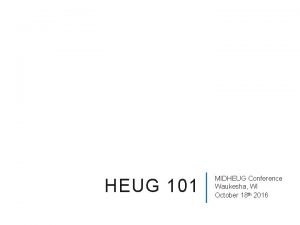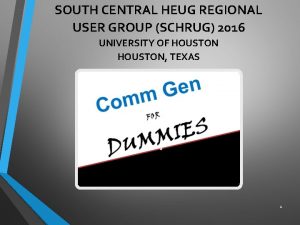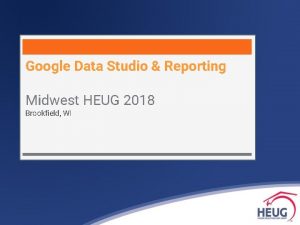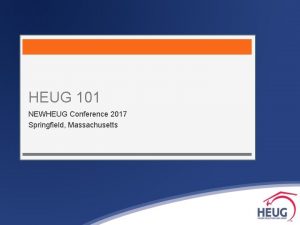3 CComm Gen Overview Mid HEUG Workshop Session






































































- Slides: 70

3 C/Comm Gen Overview Mid. HEUG Workshop Session #2022 October 17, 2016

Your Presenter Matt Hansen o o Database Programmer Analyst-Principle Student Administration Team Lead University of Missouri – System hansenma@umsystem. edu

University of Missouri - Fall Enrollment 78, 460

Your Organization & Oracle People. Soft: Campus Solutions 9. 0 o Four Separate Instances of Campus Solutions People. Tools Version 8. 55. 09 o Completed People. Tools Upgrade – July 2016 2014 HEUG Midwest Regional


What environment are you in?

Overview Ø Ø 3 C Engine o 3 C refers to Communications, Checklists and Comments o 3 C Engine is used to assign these types of records to a student Communication Generation (Comm Gen) o The process which generates the corresponding message content for a communication record o Variable student data is used during the process to create the output o Output options • Paper Letters: Output is generated, printed and then mailed • Emails: Output is generated and sent electronically

3 C Engine/Comm Gen Setup Ø Multi-step Setup Ø Steps for both processes covered together

Create Standard Letter Code Campus Community > Communications > Setup Communications > Standard Letter Table CS o Create this without “Define Comm Gen Parameters” checkbox selected, you will come back to this

Create Communication Context Campus Community > Communications > Setup Communications > Communication Context Table o Add all the related Standard Letter codes to the Communication Context • If you send the same award letter as both email and letter, you would add a line for each method here

Create Communication Category Campus Community > Communications > Setup Communications > Communication Category Table o Create a Communication Category and add the Communication Context from the previous step.

Create Communication Category Campus Community > Communications > Setup Communications > Communication Category Table o If there is already an appropriate communication category set up, add the Communication Context. • When adding a new Letter Code and Communication Context to an existing Communication Category, you need to add a new effective dated Communication Category row. This is due to effective dated logic between the Communication Category and Communication Context tables.

Communication 3 C Groups Campus Community > Communications > Setup Communications > Communication 3 C Groups o Attach 3 C Group security to your Communication Category (if not already associated)

3 C Group Security (Row-Level) Main Menu > Set Up SACR > Security > Secure Student Administration > User ID > 3 C Group Security o Each user needs access to the 3 C Group in order to view or assign communications

Create Communication Speed Key Campus Community > Communications > Setup Communications > Communication Speed Key Table o The Communication Speed Key is often abbreviated as: Comm Key o Processes that mass assign communications (3 C Engine) require Communication Speed Keys

Add the Speed Key to Your User Defaults Set Up SACR > User Defaults (Communication Speed Keys tab) o Each user will have to do this, be sure Institution and Administrative Function are entered first • This can be used when manually assigning communications

Set up 3 C Event ID Campus Community > 3 C Engine > Setup 3 C Engine > Event Definition o The Event Definition is only used for mass assignment using 3 C Engine and is NOT necessary for communications that are manually assigned

Add 3 C Group Security to Event ID Campus Community > 3 C Engine > Setup 3 C Engine > Event 3 C Groups o If the Group does not exist in the prompt list, verify that you have the appropriate security Set Up SACR > Security > Secure Student Administration > User ID > 3 C Group Security

Create Pop Select Query for 3 C Engine Reporting Tools > Query Manager o Define the criteria for selecting the appropriate EMPLIDs • Determines “Who” will get the communication o Remember to include the appropriate Bind Record for the Administrative Function

Create Pop Select Query for 3 C Engine Reporting Tools > Query Manager o The Pop Select Query only needs to return the fields from the Bind Record o The Administrative Function variable data needs to be identified in the query

Create Pop Select Query for 3 C Engine Reporting Tools > Query Manager o Include criteria to select the correct EMPLIDs for whom the communication should be assigned

Create the RTF Template in Microsoft Word Build the RTF Template with standard paragraphs with no variable fields o You will plug those in later, you can insert placeholders where the variable fields will be. o Save the template as an RTF (Rich Text Format) file on your computer or a shared drive.

Build Query For Additional Data (Optional) Reporting Tools > Query Manager o For first-time users I recommend skipping this step on your first few communications o You do not need to complete this step if your communication only uses basic student information o The Comm Gen process produces a set of Generic Process Data • Name • Address • Email Address • Checklist Information o The Administrative Function variable data is also available by default

Create Communication Data Source Campus Community > Communications > Setup Communications > Communication Data Source o Create or identify the Communication Data Source for your Communication • DO NOT use the Data Source navigation located in Reporting Tools > BI Publisher > Data Source o Select the appropriate Admin Function that will be used for the Communication

Create Communication Data Source Campus Community > Communications > Setup Communications > Communication Data Source o Critical Data identifies which data to include as critical to the creation of the output

Create Communication Data Source Campus Community > Communications > Setup Communications > Communication Data Source o Click the Register Data Source button o Click View/Download Sample Data File

Create Communication Data Source Campus Community > Communications > Setup Communications > Communication Data Source o A new window will show in the browser displaying the XML sample data o If the browser page doesn’t load, refresh the URL

Create Communication Data Source Campus Community > Communications > Setup Communications > Communication Data Source o Save the XML data in the same location as your RTF template o Depending on the browser the instructions vary • Internet Explorer: Click File > Save As • Firefox: Click File > Save Page As § Change Save As Type: Web Page, XML only • Chrome: Right Click and Select : Save As

Open RTF Template and Plug In Data Fields Reporting Tools > BI Publisher > Setup > Design Helper o FIRST TIME ONLY – Download and Install the MS Word Plug-in from People. Soft o Specific install information available through People. Books o After downloading the Plug-in, close ALL of your Microsoft applications before installing o This adds the Plug-in to MS Word

Open RTF Template and Plug In Data Fields o Download the XML data and start plugging in your variable data fields o After clicking Load XML Data, a dialogue box will open. Navigate to your XML Data Source that you saved earlier and select the XML file and click Open

Open RTF Template and Plug In Data Fields o After choosing your data source, you should see a message saying it loaded successfully o Click Add-Ins/BI Publisher > Insert > Field

Open RTF Template and Plug In Data Fields o After clicking Insert Field, you will then see the list of fields available

Open RTF Template and Plug In Data Fields o Insert desired fields in your template, you may have to scroll down to see the fields you need o Replace any placeholder fields with the fields from the data source o After inserting all necessary fields, save your template so you can upload it to the Report Definition

Open RTF Template and Plug In Data Fields o Completed template with variable data fields added

Build Report Definition Reporting Tools > BI Publisher > Report Definition o Name the Report Definition and specify Data Source Type: XMLDoc Object v User must have the Role: XMLP Report Developer o Use the Data Source ID you created in a previous step

Build Report Definition Reporting Tools > BI Publisher > Report Definition o Populate all fields on the Definition tab o Your Report Category ID may differ from this screenshot based on People. Soft setup • We do not restrict security access to Report Definitions

Build Report Definition Reporting Tools > BI Publisher > Report Definition o Populate fields on the Template tab in the Template section • Channel field: Printer (Letter communications) and Email (Email communications) o Upload your RTF template

Build Report Definition Reporting Tools > BI Publisher > Report Definition o Click Browse and navigate to where you saved the RTF template

Build Report Definition Reporting Tools > BI Publisher > Report Definition o After clicking Open on the dialogue box, click the Upload button o After clicking Upload, change the Status to Active

Build Report Definition Reporting Tools > BI Publisher > Report Definition o We set the default to PDF on the Output tab

Build Report Definition Reporting Tools > BI Publisher > Report Definition o We accept the defaults on the Properties and Security tabs o During a People. Tools upgrade to PT 8. 53 we had an issue where letters were not printing • We had to set the Property: pdf-security to False, under Property: PDF Security

Update the Letter Code for Comm Gen Campus Community > Communications > Set up Communications > Standard Letter Table CS o Check the box: Define Comm Gen Parameters

Update the Letter Code for Comm Gen Campus Community > Communications > Set up Communications > Standard Letter Table CS o In the Template Selection area, click the Report Name link o Find the correct Report Name and click the link

Update the Letter Code for Comm Gen Campus Community > Communications > Set up Communications > Standard Letter Table CS o Once you’ve added the Report Definition, click Save

Run 3 C Engine Campus Community > 3 C Engine > Run 3 C Engine o Use the 3 C Engine to mass assign your communication records using Pop Select o Under Process 3 Cs, check the Population Selection checkbox o Fill in the Event Selection with the 3 C Event ID, this will populate the Communication Key

Run 3 C Engine Campus Community > 3 C Engine > Run 3 C Engine o If you click the Details link it will show you the Event Definition details

Run 3 C Engine Campus Community > 3 C Engine > Run 3 C Engine o Under Population Selection, choose PS Query. o Use the prompt to search for and select your PS Query

Run 3 C Engine Campus Community > 3 C Engine > Run 3 C Engine o Click Edit Prompts to enter the query prompt value(s) o Based on the query criteria, Aid Year 2017 will be assigned as variable data for the communication

Run 3 C Engine Campus Community > 3 C Engine > Run 3 C Engine o Click Preview Selection Results

Run 3 C Engine Campus Community > 3 C Engine > Run 3 C Engine o On the Manage Duplicate Assignment tab, Checklist and Communications are checked by default o This will ensure a student never receives the communication twice

Run 3 C Engine Campus Community > 3 C Engine > Run 3 C Engine o Most of the time we use the Check Duplicate Communication with the Variable Data set to: Match

Run 3 C Engine Campus Community > 3 C Engine > Run 3 C Engine o The Explain link on this page is very helpful

Run 3 C Engine Campus Community > 3 C Engine > Run 3 C Engine o When finished updating the run control, click Save and you are ready to run 3 C Engine

Run 3 C Engine Campus Community > 3 C Engine > Run 3 C Engine o After process completes, the Communication Record looks like this

Run Communication Generation Campus Community > Communications > Communication Generation o Under ID Selection, choose All Person IDs o After entering the letter code you are working with, click the Report Name link

Run Communication Generation Campus Community > Communications > Communication Generation o Select your Report Name o After adding the Report Definition, the Letter Code Selection section looks like this o Update the Communication Method Usage

Run Communication Generation Campus Community > Communications > Communication Generation o The completed Selection Parameters should look like this

Run Communication Generation Campus Community > Communications > Communication Generation o Populate the Person Communication Usage and Date Range Selection o Uncheck the Missing Critical Data checkboxes, they are checked by default

Run Communication Generation Campus Community > Communications > Communication Generation o The Address Usage tables determine which addresses will be used during processing o If you are sending emails, you must select an Address Usage that includes Usage Type: E-Mail

Run Communication Generation Campus Community > Communications > Communication Generation o The Name Usage tables determine which names will be used during processing

Run Communication Generation Campus Community > Communications > Communication Generation o The completed Process Parameters page

Run Communication Generation Campus Community > Communications > Communication Generation o When testing, check the Online Preview checkbox and enter the email address you want to use

Run Communication Generation Campus Community > Communications > Communication Generation o When testing, you will get up to 10 test emails giving you a sample of the emails that will be sent

Run Communication Generation Campus Community > Communications > Communication Generation o Fill in Email Parameters tab with the email address and subject information

Run Communication Generation Campus Community > Communications > Communication Generation o Unless your communication includes checklist information, leave this blank

Run Communication Generation Campus Community > Communications > Person Communications > Communication Detail o After process completes, the Communication Record now looks like this

Run Communication Generation Campus Community > Communications > Person Communications > Communication Detail o Functional users can view the completed communication clicking View Generated Communication

Questions?

Contact Information Matt Hansen o o Database Programmer Analyst-Principle Student Administration Team Lead University of Missouri - System hansenma@umsystem. edu

This presentation are available for download from the Conference site at https: //www. heug. org/page/usalliance-conference-files Note: Sessions from previous HEUG conferences are also available.
 Diketahui ayam berpial ros/mawar (rrpp/rrpp)
Diketahui ayam berpial ros/mawar (rrpp/rrpp) Populasyonda gen frekansını etkileyen faktörler
Populasyonda gen frekansını etkileyen faktörler Ding chuan acupuncture point
Ding chuan acupuncture point Gen 4 nuclear
Gen 4 nuclear Alu unit consists of subsections namely
Alu unit consists of subsections namely Genes alelos
Genes alelos Nuvela studiata in liceu
Nuvela studiata in liceu Ikizkenar dik üçgen
Ikizkenar dik üçgen New genlib
New genlib Pautan gen
Pautan gen Gen 2:25
Gen 2:25 Agrobacterium tumefaciens ile gen aktarımı
Agrobacterium tumefaciens ile gen aktarımı Gen en un cromosoma
Gen en un cromosoma Nom acc dat gen
Nom acc dat gen Dhits gen i
Dhits gen i In-out+gen=acc
In-out+gen=acc Gen 2,18-24
Gen 2,18-24 Result demonstration
Result demonstration Genesis 4: 11
Genesis 4: 11 Gen chem
Gen chem Norming asset management
Norming asset management Next gen flowers
Next gen flowers Gen letal ejemplos
Gen letal ejemplos Next gen math standards
Next gen math standards Identik gen nedir
Identik gen nedir Kalıp zincir anlamlı zincir
Kalıp zincir anlamlı zincir Jewish gen
Jewish gen Hibridoma adalah
Hibridoma adalah Genoma
Genoma Gen
Gen Nextgen electronic medical record
Nextgen electronic medical record Amway compensation plan 2013
Amway compensation plan 2013 Words with the root matri
Words with the root matri Psu inter domain courses
Psu inter domain courses Next gen eu
Next gen eu Nom gen dat acc abl
Nom gen dat acc abl Aparezca
Aparezca Gen chem
Gen chem Penn state gen eds
Penn state gen eds Cadena de aminoácidos
Cadena de aminoácidos Allel genler
Allel genler 4th gen cephalosporins
4th gen cephalosporins Jumlah kromosom yang dimiliki manusia adalah
Jumlah kromosom yang dimiliki manusia adalah What generation is 1984 babies
What generation is 1984 babies Epistasis
Epistasis Gen 3:7
Gen 3:7 The constant unchanging foundation of a medical term
The constant unchanging foundation of a medical term Pengertian tautan gen
Pengertian tautan gen Mehmet mutlu gen
Mehmet mutlu gen Programacion gen
Programacion gen I gen
I gen When does the ncsbn begin the next generation nclex
When does the ncsbn begin the next generation nclex P
P Xwt gen 4
Xwt gen 4 Gen and kill in compiler design
Gen and kill in compiler design Gen de limpieza de beta tubulina
Gen de limpieza de beta tubulina Celija gen asocijacije
Celija gen asocijacije Jmu ecampus
Jmu ecampus Next generation learning standards nys
Next generation learning standards nys Bank gen
Bank gen F tablosu
F tablosu Gen dat
Gen dat Clin gen
Clin gen Nicelabel alternative
Nicelabel alternative Vad är en gen
Vad är en gen Daltonismo
Daltonismo Joint requirements oversight council
Joint requirements oversight council Tesztikuláris feminizáció
Tesztikuláris feminizáció The hand approach general paper
The hand approach general paper Gen array
Gen array Next gen pos
Next gen pos
